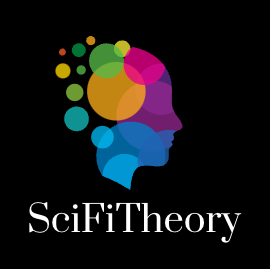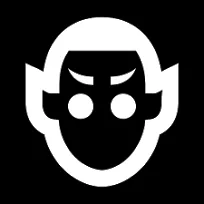Getting Started: Your Essential NFT Toolkit 🧑💻
Ready to o dive into the world of NFTs?
Getting started is more accessible than you might think, though it does require some initial setup and understanding of the digital infrastructure that powers this new economy. The process essentially boils down to three fundamental steps: setting up your cryptocurrency wallet, funding it with the appropriate digital currency, and connecting to a reputable marketplace. Think of it as obtaining your passport, exchanging currency, and finding a trusted guide before embarking on an expedition to a fascinating new digital frontier.
The beauty of the NFT ecosystem lies in its accessibility—you don't need to be a tech expert or have extensive knowledge of blockchain technology to participate. However, like any new venture, taking the time to understand the basics will serve you well and help you avoid common pitfalls that can be costly for newcomers.
Step 1: Set Up Your Crypto Wallet
Your journey begins with creating a cryptocurrency wallet, which serves as your digital identity and storage vault in the blockchain world. This isn't a physical wallet you can hold in your hands, but rather a sophisticated piece of software—typically a browser extension or mobile app—that allows you to securely store, manage, and interact with your digital assets, including NFTs, cryptocurrencies, and other blockchain-based tokens.
For beginners entering the NFT space, a "self-custody" or "non-custodial" wallet is the gold standard. This means you, and only you, maintain complete control over your digital assets. Unlike traditional banking where the institution holds your money, self-custody wallets put you in the driver's seat, which comes with both tremendous freedom and significant responsibility.
The most popular choice for newcomers is MetaMask, which has become the de facto standard for interacting with the Ethereum ecosystem—where the majority of high-profile NFT collections reside. MetaMask functions as a browser extension for Chrome, Firefox, and other major browsers, and also offers mobile apps for iOS and Android. Its user-friendly interface and widespread adoption make it an excellent starting point for beginners.
For those interested in exploring the Solana blockchain, which has gained significant traction due to its faster transaction speeds and lower fees, Phantom wallet is the preferred choice. Phantom offers similar functionality to MetaMask but is optimized for the Solana ecosystem, providing seamless integration with Solana-based NFT marketplaces and applications.
Other reputable wallet options include Coinbase Wallet (not to be confused with the Coinbase exchange), Trust Wallet, and Rainbow Wallet, each offering unique features and interfaces that may appeal to different user preferences.
When you create your wallet, the software will generate what's called a seed phrase or recovery phrase—typically a sequence of 12 or 24 seemingly random words drawn from a standardized dictionary. This phrase is arguably the most critical piece of information you'll encounter in your entire NFT journey. It serves as the master key to your digital kingdom, providing complete access to all assets stored in your wallet.
The importance of properly securing your seed phrase cannot be overstated. Anyone who possesses these words can fully access and control your wallet, including the ability to transfer all your assets to their own accounts. Conversely, if you lose your seed phrase, you lose access to your wallet forever—there's no "forgot password" option, no customer service department to call, and no way to recover your assets. The decentralized nature of blockchain technology, while providing unprecedented security and autonomy, also means there's no central authority to help you if things go wrong.
Best practices for seed phrase security include writing it down on paper (never storing it digitally), keeping multiple copies in separate secure locations, and considering more advanced storage solutions like metal backup plates for long-term preservation. Never photograph your seed phrase, store it in cloud services, or share it with anyone under any circumstances.
Step 2: Acquire Cryptocurrency
With your digital wallet established and secured, the next step involves acquiring the cryptocurrency needed to purchase NFTs. Unlike traditional online shopping where you can use credit cards or PayPal, the NFT ecosystem operates entirely on blockchain-based currencies, each tied to specific networks and ecosystems.
The cryptocurrency you'll need depends entirely on which blockchain network hosts the NFTs you're interested in purchasing. The vast majority of established NFT collections, including household names like CryptoPunks, Bored Ape Yacht Club, and Art Blocks, exist on the Ethereum blockchain and require Ether (ETH) for transactions. Ethereum's first-mover advantage and robust smart contract capabilities have made it the preferred platform for many high-value NFT projects.
However, Ethereum's popularity comes with trade-offs, particularly in the form of network congestion and high transaction fees (known as "gas fees"). During periods of high activity, these fees can range from $20 to over $100 per transaction, making smaller purchases economically unfeasible for many users.
This has led to the rise of alternative blockchains, most notably Solana, which uses its native currency SOL for transactions. Solana offers significantly faster transaction processing and lower fees, typically costing fractions of a dollar rather than tens of dollars. Other emerging blockchain networks include Polygon (which uses MATIC tokens), Tezos (XTZ), and Flow (FLOW), each with their own growing NFT ecosystems.
To acquire cryptocurrency, you'll need to use a centralized cryptocurrency exchange—essentially a digital currency exchange service that allows you to convert traditional money into digital assets. The most beginner-friendly options include Coinbase, Binance, Kraken, and Gemini. These platforms have invested heavily in user experience and regulatory compliance, making them safe and accessible entry points for newcomers.
The process typically involves creating an account, completing identity verification (required by financial regulations), linking a payment method such as a bank account or debit card, and then purchasing your desired cryptocurrency. Most exchanges offer multiple payment options, though bank transfers usually offer better rates than card purchases, albeit with longer processing times.
Once you've purchased cryptocurrency on an exchange, it's crucial to transfer it to your personal wallet rather than leaving it on the exchange. While reputable exchanges have strong security measures, they remain attractive targets for hackers, and keeping your assets in your own wallet ensures you maintain full control. The transfer process involves copying your wallet's receiving address and initiating a withdrawal from the exchange—always double-check addresses, as blockchain transactions are irreversible.
Step 3: Connect to a Marketplace
With a funded wallet in hand, you're now ready to explore the vibrant world of NFT marketplaces—digital galleries and auction houses where creators showcase their work and collectors discover new pieces. These platforms serve as the primary interface between users and the broader NFT ecosystem, offering browsing, purchasing, selling, and often creation tools all in one place.
OpenSea stands as the undisputed giant of the NFT marketplace world, hosting millions of digital assets primarily from the Ethereum blockchain. Its comprehensive catalog includes everything from pixel art and profile pictures to virtual real estate and gaming items. OpenSea's user-friendly interface makes it an excellent starting point for beginners, offering robust search and filtering tools, detailed collection pages, and comprehensive transaction histories.
For those operating within the Solana ecosystem, Magic Eden has emerged as the leading marketplace, offering similar functionality to OpenSea but optimized for Solana's faster and cheaper transaction environment. Magic Eden has gained particular traction among gaming-focused NFT projects and has become the go-to platform for Solana-based collections.
Other notable marketplaces include Rarible, which emphasizes community governance and creator tools; SuperRare, which focuses on high-quality digital art with a curated approach; Foundation, known for its invitation-only model and artistic focus; and Async Art, which specializes in programmable and dynamic NFTs that can change over time.
Connecting your wallet to a marketplace is typically a straightforward process. Most platforms feature a prominent "Connect Wallet" button that, when clicked, will prompt you to authorize the connection through your wallet software. This connection allows the marketplace to display your current holdings, facilitate transactions, and provide personalized recommendations based on your activity.
However, it's important to understand the cost structure before making your first purchase. NFT transactions involve several types of fees that can significantly impact the total cost of ownership. Marketplaces typically charge a service fee, usually ranging from 2.5% to 5% of the sale price, which covers platform maintenance, customer support, and feature development.
Additionally, many NFT collections incorporate creator royalties—a percentage of each resale that automatically goes back to the original artist or creator. These royalties, typically ranging from 5% to 10%, represent one of the most revolutionary aspects of NFTs, providing creators with ongoing revenue streams from their work's appreciation in value. This mechanism has fundamentally changed the economics of digital art, allowing creators to benefit from the long-term success of their pieces rather than just the initial sale.
Beyond marketplace and royalty fees, you'll also encounter blockchain transaction fees, commonly called "gas fees" on Ethereum. These fees compensate network validators for processing your transaction and can vary dramatically based on network congestion. During busy periods, gas fees can exceed the cost of the NFT itself, making timing an important consideration for cost-conscious buyers.
Understanding these fee structures upfront helps set realistic expectations and allows you to budget appropriately for your NFT purchases. Many experienced collectors track gas prices using tools like GasTracker or ETH Gas Station, timing their transactions for periods of lower network activity to minimize costs.
As you begin exploring marketplaces, take time to familiarize yourself with the various features and tools available. Most platforms offer watchlist functionality, allowing you to track interesting collections or specific pieces. Price history charts help you understand market trends and make informed purchasing decisions. Collection verification badges help distinguish legitimate projects from potential scams or unauthorized copies.
The marketplace landscape continues to evolve rapidly, with new platforms launching regularly and existing ones adding innovative features. Some newer marketplaces are experimenting with different fee structures, enhanced creator tools, or specialized focuses like music, photography, or virtual worlds. Staying informed about these developments can help you discover new opportunities and find platforms that best align with your interests and collecting goals.
Remember that connecting your wallet to a marketplace creates a persistent relationship—the platform can see your wallet's contents and transaction history. While this enables personalized features and recommendations, it also means your collecting activity becomes part of your public blockchain identity. This transparency is a fundamental characteristic of blockchain technology and something to keep in mind as you build your digital collection.
With your toolkit complete—wallet secured, cryptocurrency acquired, and marketplace connections established—you're ready to begin your journey into the fascinating world of NFT collecting. The next steps involve developing your collecting strategy, understanding market dynamics, and discovering the communities and creators that resonate with your interests and investment goals.

